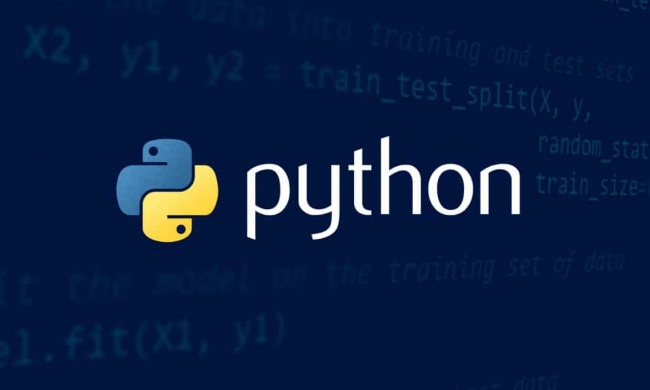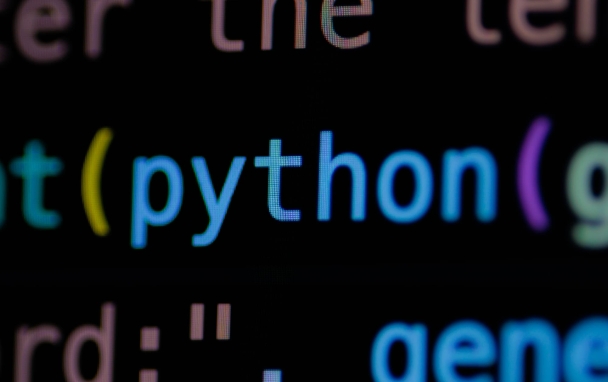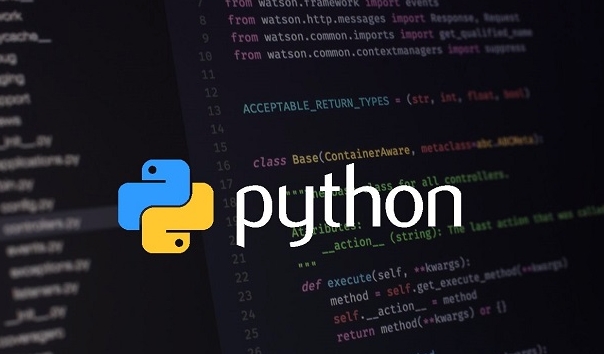A metaclass is a "class that creates a class", and its core lies in interfering with the class creation process by inheriting the type and overwriting the __new__ or __init__ methods. 1. Metaclasses allow modification of behavior when class generation, such as adding properties, checking method naming, etc.; 2. Custom metaclasses are usually implemented by rewriting __new__, such as forcing the class to contain specific methods; 3. Common uses include ORM frameworks, interface verification, automatic registration of subclasses, etc.; 4. When using it, you need to pay attention to avoid overuse, ensure readability, debugging complexity, and conflicts in multiple inheritance.

Python's metaclasses and type customization sound like advanced topics, but their core ideas are not difficult to understand. If you have used class and type() , then you are only one layer of window paper away from mastering metaclasses.

Simply put, metaclasses are "classes that create classes". The class we usually write, such as class Person: , is actually the default metaclass of type . Metaclasses allow you to modify or enhance the behavior of the class before or when it is created.

What is metaclass?
In Python, everything is an object. Including int , str , and classes you write yourself are all objects. So how did these classes come from? The answer is: created from metaclasses.
The most basic metaclass is the built-in type . You can create a class manually like this:

MyClass = type('MyClass', (), {})This line of code is equivalent to:
class MyClass:
passSo, type is the default metaclass for all classes . If you want to do something when a class is created - such as automatically adding properties, checking method naming, and registering subclasses - you can do it by customizing metaclasses.
How to customize metaclass?
To customize a metaclass, just inherit type and then override its __new__ or __init__ methods. The difference between these two methods is:
-
__new__is responsible for creating class objects -
__init__is responsible for initializing class objects
It is usually recommended to use __new__ first, because what you want to change is the generation process of the class.
To give a simple example: force each class to have a required_method method.
class MyMeta(type):
def __new__(cls, name, bases, attrs):
if 'required_method' not in attrs:
raise TypeError("required_method method must be implemented")
return super().__new__(cls, name, bases, attrs)
class MyClass(metaclass=MyMeta):
def required_method(self):
pass If you try to define a class without required_method , an exception will be thrown.
What are the common uses of metaclasses?
While not every project requires metaclasses, it is very useful in some scenarios:
- ORM framework : Use metaclasses like Django or SQLAlchemy to automatically generate database field maps.
- Interface Verification : Ensure that the class implements a specific method collection.
- Automatically register subclasses : Used to automatically collect all subclasses in plug-in systems or factory mode.
- Modify class attributes/methods : such as adding logs, decorators, version numbers and other information in a unified manner.
For example, automatically register all subclasses:
class PluginMeta(type):
registry = {}
def __new__(cls, name, bases, attrs):
new_class = super().__new__(cls, name, bases, attrs)
# Ignore the base class if name != 'BasePlugin':
cls.registry[name] = new_class
return new_class
class BasePlugin(metaclass=PluginMeta):
pass
class PluginA(BasePlugin):
pass
class PluginB(BasePlugin):
pass
print(PluginMeta.registry) # Output {'PluginA': <class ...>, 'PluginB': <class ...>}What should I pay attention to when using metaclasses?
Metaclasses are powerful, but they are also prone to overuse. Here are some precautions for use:
- Don’t use metaclasses for the sake of showing off your skills : problems that can be solved with decorators or ordinary inheritance, there is no need to use metaclasses.
- Readability is important : metaclasses will change the logic of the creation of the class, which may not be easy for others to understand when reading the code.
- Debugging difficulty increases : If a metaclass error occurs, tracking problems may be more troublesome.
- Be careful when combining with multiple inheritance : multiple metaclasses may conflict and the inheritance relationship of the metaclass needs to be explicitly specified.
In addition, the execution order of metaclasses also needs to be noted: if a class has multiple parent classes at the same time and each of them specifies different metaclasses, you need to provide a common metaclass, otherwise an error will be reported.
Basically that's it. Metaclasses are not magic, they just help you control how classes are created. Master type and __new__ and you can already start trying to solve problems with metaclasses.
The above is the detailed content of Understanding Metaclasses and Type Customization in Python. For more information, please follow other related articles on the PHP Chinese website!

Hot AI Tools

Undress AI Tool
Undress images for free

Undresser.AI Undress
AI-powered app for creating realistic nude photos

AI Clothes Remover
Online AI tool for removing clothes from photos.

Clothoff.io
AI clothes remover

Video Face Swap
Swap faces in any video effortlessly with our completely free AI face swap tool!

Hot Article

Hot Tools

Notepad++7.3.1
Easy-to-use and free code editor

SublimeText3 Chinese version
Chinese version, very easy to use

Zend Studio 13.0.1
Powerful PHP integrated development environment

Dreamweaver CS6
Visual web development tools

SublimeText3 Mac version
God-level code editing software (SublimeText3)
 How to handle API authentication in Python
Jul 13, 2025 am 02:22 AM
How to handle API authentication in Python
Jul 13, 2025 am 02:22 AM
The key to dealing with API authentication is to understand and use the authentication method correctly. 1. APIKey is the simplest authentication method, usually placed in the request header or URL parameters; 2. BasicAuth uses username and password for Base64 encoding transmission, which is suitable for internal systems; 3. OAuth2 needs to obtain the token first through client_id and client_secret, and then bring the BearerToken in the request header; 4. In order to deal with the token expiration, the token management class can be encapsulated and automatically refreshed the token; in short, selecting the appropriate method according to the document and safely storing the key information is the key.
 Explain Python assertions.
Jul 07, 2025 am 12:14 AM
Explain Python assertions.
Jul 07, 2025 am 12:14 AM
Assert is an assertion tool used in Python for debugging, and throws an AssertionError when the condition is not met. Its syntax is assert condition plus optional error information, which is suitable for internal logic verification such as parameter checking, status confirmation, etc., but cannot be used for security or user input checking, and should be used in conjunction with clear prompt information. It is only available for auxiliary debugging in the development stage rather than substituting exception handling.
 What are python iterators?
Jul 08, 2025 am 02:56 AM
What are python iterators?
Jul 08, 2025 am 02:56 AM
InPython,iteratorsareobjectsthatallowloopingthroughcollectionsbyimplementing__iter__()and__next__().1)Iteratorsworkviatheiteratorprotocol,using__iter__()toreturntheiteratorand__next__()toretrievethenextitemuntilStopIterationisraised.2)Aniterable(like
 What are Python type hints?
Jul 07, 2025 am 02:55 AM
What are Python type hints?
Jul 07, 2025 am 02:55 AM
TypehintsinPythonsolvetheproblemofambiguityandpotentialbugsindynamicallytypedcodebyallowingdeveloperstospecifyexpectedtypes.Theyenhancereadability,enableearlybugdetection,andimprovetoolingsupport.Typehintsareaddedusingacolon(:)forvariablesandparamete
 How to iterate over two lists at once Python
Jul 09, 2025 am 01:13 AM
How to iterate over two lists at once Python
Jul 09, 2025 am 01:13 AM
A common method to traverse two lists simultaneously in Python is to use the zip() function, which will pair multiple lists in order and be the shortest; if the list length is inconsistent, you can use itertools.zip_longest() to be the longest and fill in the missing values; combined with enumerate(), you can get the index at the same time. 1.zip() is concise and practical, suitable for paired data iteration; 2.zip_longest() can fill in the default value when dealing with inconsistent lengths; 3.enumerate(zip()) can obtain indexes during traversal, meeting the needs of a variety of complex scenarios.
 Python FastAPI tutorial
Jul 12, 2025 am 02:42 AM
Python FastAPI tutorial
Jul 12, 2025 am 02:42 AM
To create modern and efficient APIs using Python, FastAPI is recommended; it is based on standard Python type prompts and can automatically generate documents, with excellent performance. After installing FastAPI and ASGI server uvicorn, you can write interface code. By defining routes, writing processing functions, and returning data, APIs can be quickly built. FastAPI supports a variety of HTTP methods and provides automatically generated SwaggerUI and ReDoc documentation systems. URL parameters can be captured through path definition, while query parameters can be implemented by setting default values ??for function parameters. The rational use of Pydantic models can help improve development efficiency and accuracy.
 How to test an API with Python
Jul 12, 2025 am 02:47 AM
How to test an API with Python
Jul 12, 2025 am 02:47 AM
To test the API, you need to use Python's Requests library. The steps are to install the library, send requests, verify responses, set timeouts and retry. First, install the library through pipinstallrequests; then use requests.get() or requests.post() and other methods to send GET or POST requests; then check response.status_code and response.json() to ensure that the return result is in compliance with expectations; finally, add timeout parameters to set the timeout time, and combine the retrying library to achieve automatic retry to enhance stability.
 Setting Up and Using Python Virtual Environments
Jul 06, 2025 am 02:56 AM
Setting Up and Using Python Virtual Environments
Jul 06, 2025 am 02:56 AM
A virtual environment can isolate the dependencies of different projects. Created using Python's own venv module, the command is python-mvenvenv; activation method: Windows uses env\Scripts\activate, macOS/Linux uses sourceenv/bin/activate; installation package uses pipinstall, use pipfreeze>requirements.txt to generate requirements files, and use pipinstall-rrequirements.txt to restore the environment; precautions include not submitting to Git, reactivate each time the new terminal is opened, and automatic identification and switching can be used by IDE.






